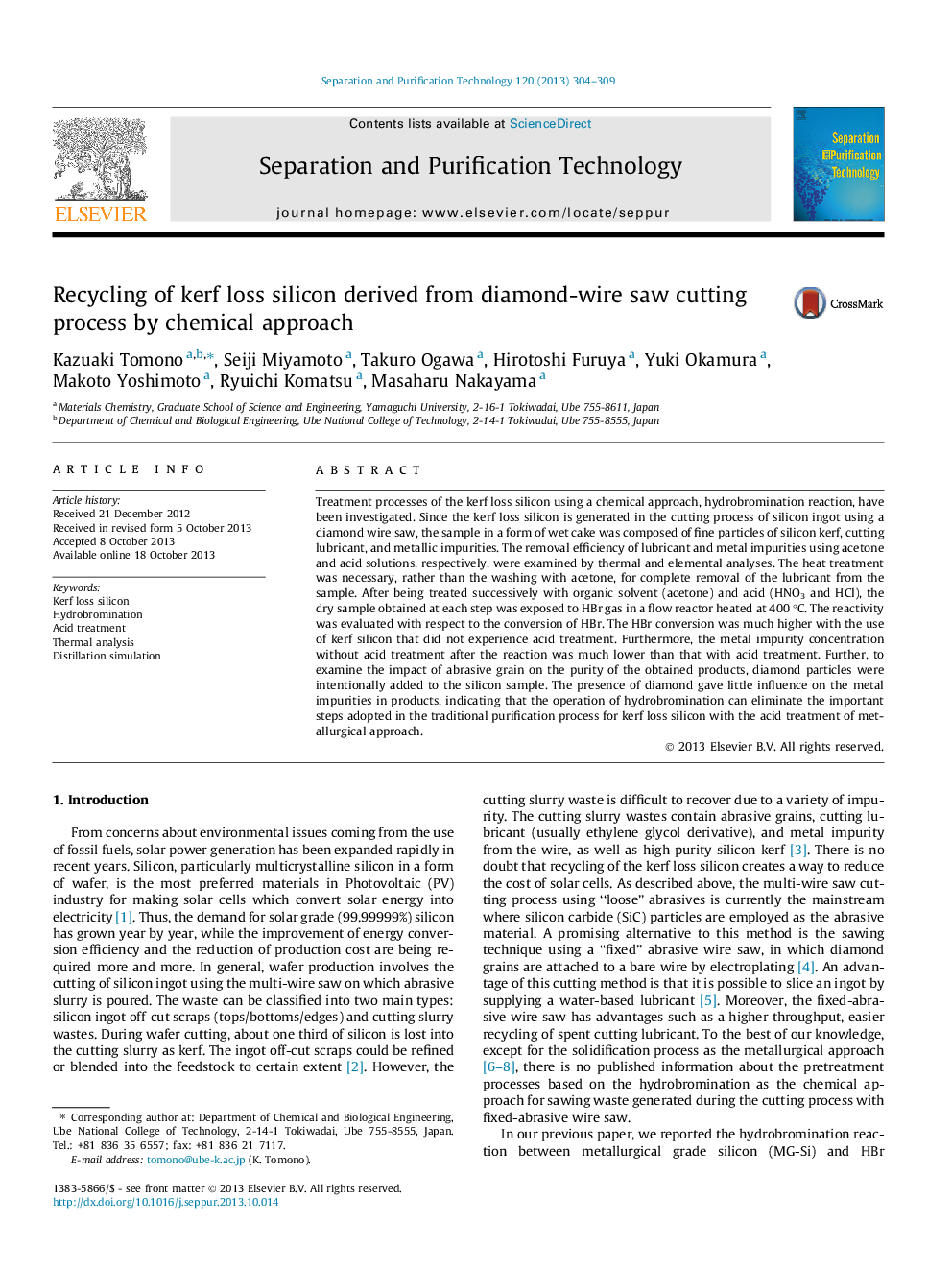| Article ID | Journal | Published Year | Pages | File Type |
|---|---|---|---|---|
| 641280 | Separation and Purification Technology | 2013 | 6 Pages |
Abstract
Treatment processes of the kerf loss silicon using a chemical approach, hydrobromination reaction, have been investigated. Since the kerf loss silicon is generated in the cutting process of silicon ingot using a diamond wire saw, the sample in a form of wet cake was composed of fine particles of silicon kerf, cutting lubricant, and metallic impurities. The removal efficiency of lubricant and metal impurities using acetone and acid solutions, respectively, were examined by thermal and elemental analyses. The heat treatment was necessary, rather than the washing with acetone, for complete removal of the lubricant from the sample. After being treated successively with organic solvent (acetone) and acid (HNO3 and HCl), the dry sample obtained at each step was exposed to HBr gas in a flow reactor heated at 400 °C. The reactivity was evaluated with respect to the conversion of HBr. The HBr conversion was much higher with the use of kerf silicon that did not experience acid treatment. Furthermore, the metal impurity concentration without acid treatment after the reaction was much lower than that with acid treatment. Further, to examine the impact of abrasive grain on the purity of the obtained products, diamond particles were intentionally added to the silicon sample. The presence of diamond gave little influence on the metal impurities in products, indicating that the operation of hydrobromination can eliminate the important steps adopted in the traditional purification process for kerf loss silicon with the acid treatment of metallurgical approach.
Related Topics
Physical Sciences and Engineering
Chemical Engineering
Filtration and Separation
Authors
Kazuaki Tomono, Seiji Miyamoto, Takuro Ogawa, Hirotoshi Furuya, Yuki Okamura, Makoto Yoshimoto, Ryuichi Komatsu, Masaharu Nakayama,
